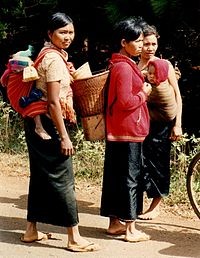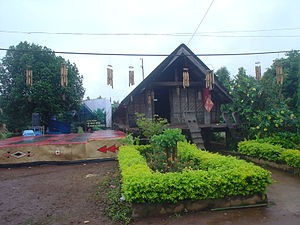(VOVworld) - The Ede ethnic group’s matriarchal system is reflected in family, social relations, housing architecture and musical instruments.
 |
| Ede women in Dak Lak (Photo: Wikipedia) |
Traditionally, the most powerful person in an Ede family is a woman, according to Doctor Nguyen Duy Thieu, Deputy Director of the Vietnam Museum of Ethnology: “Women take the initiative in marriage. They inform their mothers of who they love and intend to marry. After the wedding, a groom lives in his wife’s house. Children bear their mother’s surname. If a wife dies, her family will find another woman to marry her widower. The Ede call this custom a Chue Nue”.
To some extent, this custom is human. But it can have an undesirable corollary: hampering the rights to freedom of love and selection of happiness. Dr. Thieu says although women are family leaders, men play a certain role: “Women make decisions but via the men’s position. The Dam San epic is an example. Dam San was the tribal leader, who led a war against the enemy. Though his wife was from a clan of tribe leaders, she acted behind her husband”.
Ede men, either husband or son, represent the family when receiving guests to their home. Men are in charge of communal affairs, including major events of their maternal clans like funerals and weddings.
 |
| An Ede house (Photo: Wikipedia) |
The Ede matriarchy leaves imprints on their typical long house, which is made of timber and bamboo and can accommodate a dozen people. Ms. H’roi of Ki hamlet, Buon Ma Thuot city, Dak Lak province, told VOV: “The long house is divided into two parts. The living room called Gah is situated near the entry staircase. A compartment called Tul Gah is for unmarried men and the Ok compartment is for married couples. Tul Ok is for unmarried women”.
An Ede house has male and female staircases. The one for men is in the front, while the one for women is at the back of the house. The staircase is carved with images of female breasts and a crescent.
Traditionally, the Ede women have been not only family leaders but also village chiefs in charge of land management and resolution of disputes. Dr. Thien says a village chief is respected by the villagers:“Women used to play the role of village chief. Every year they collected land tax, checked how the community treated their land, and organized worshipping rituals. Today, the administration is elected by the people and the chairperson of a village is either male or female”.